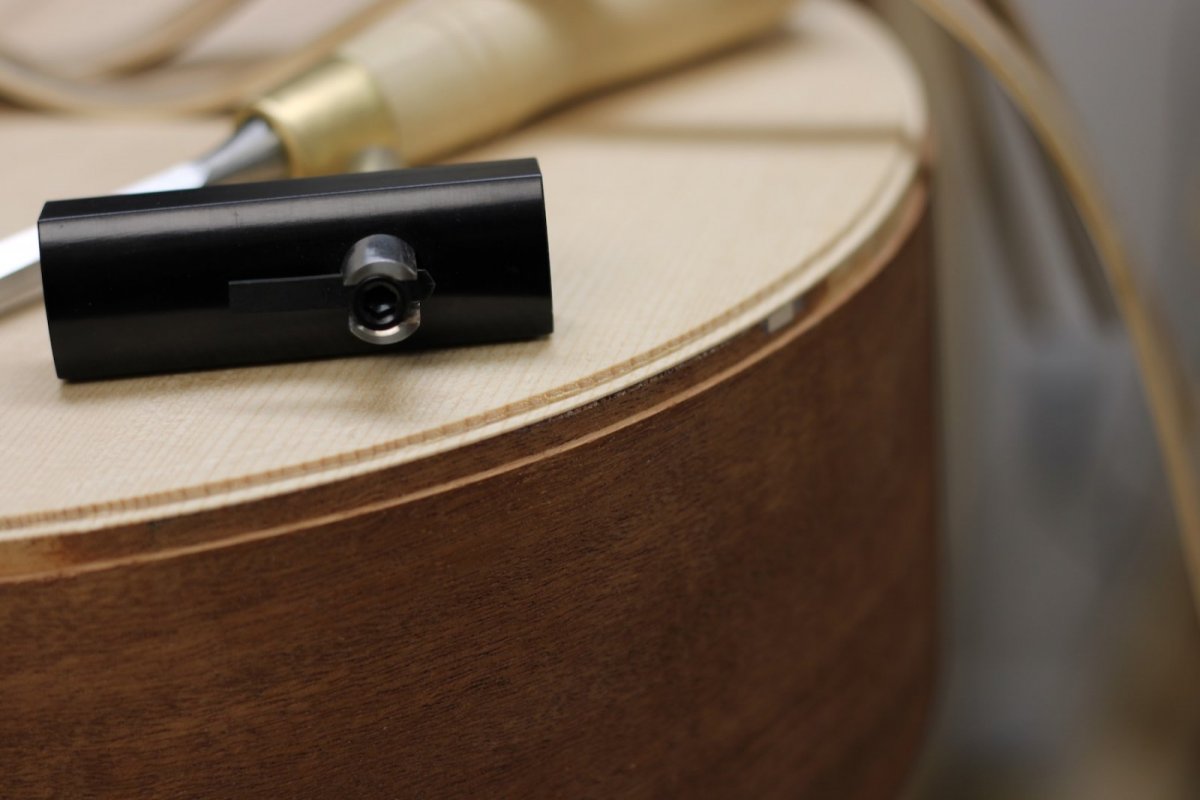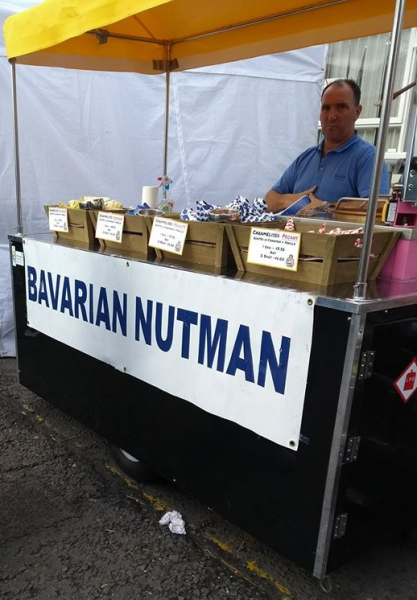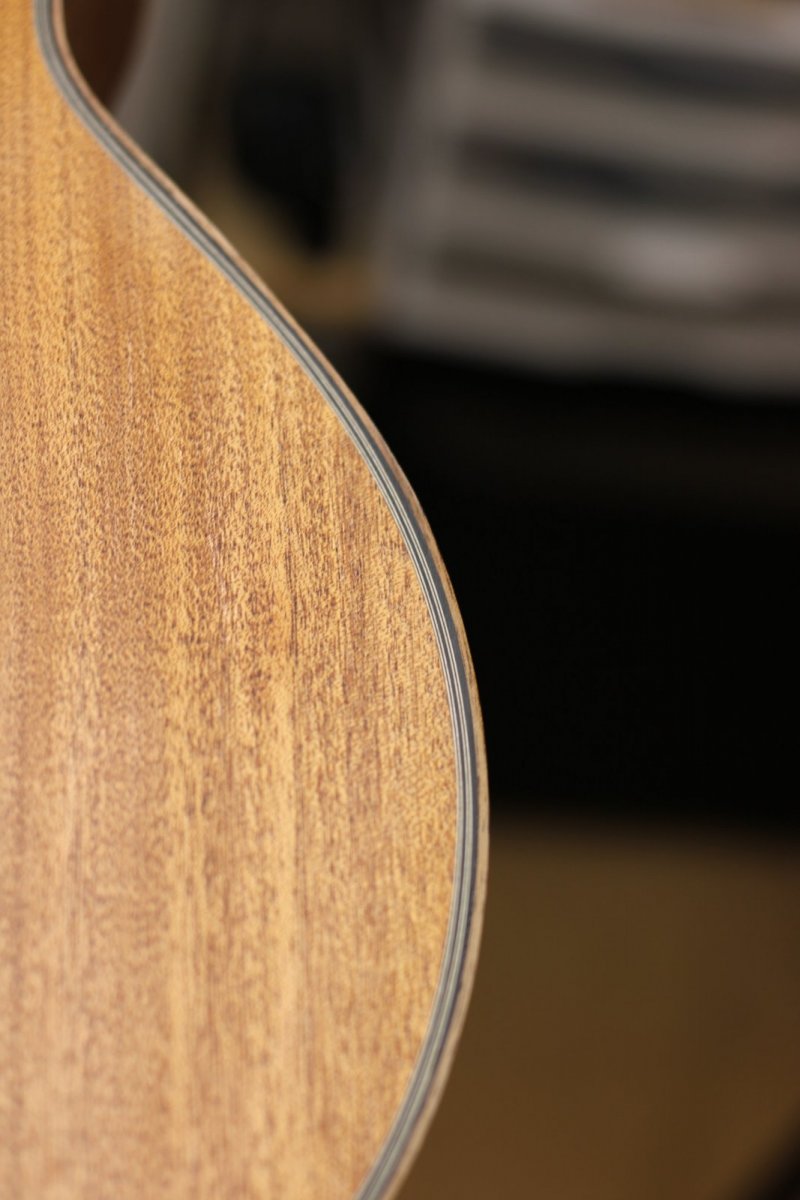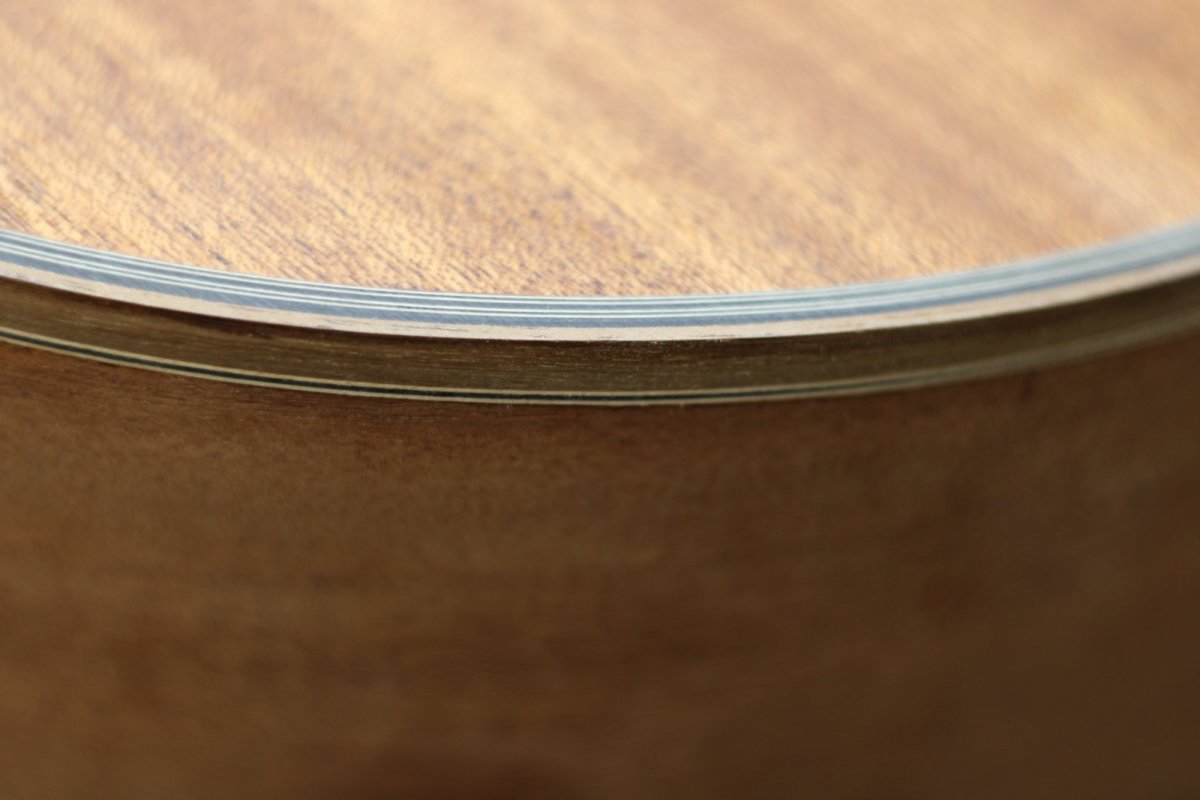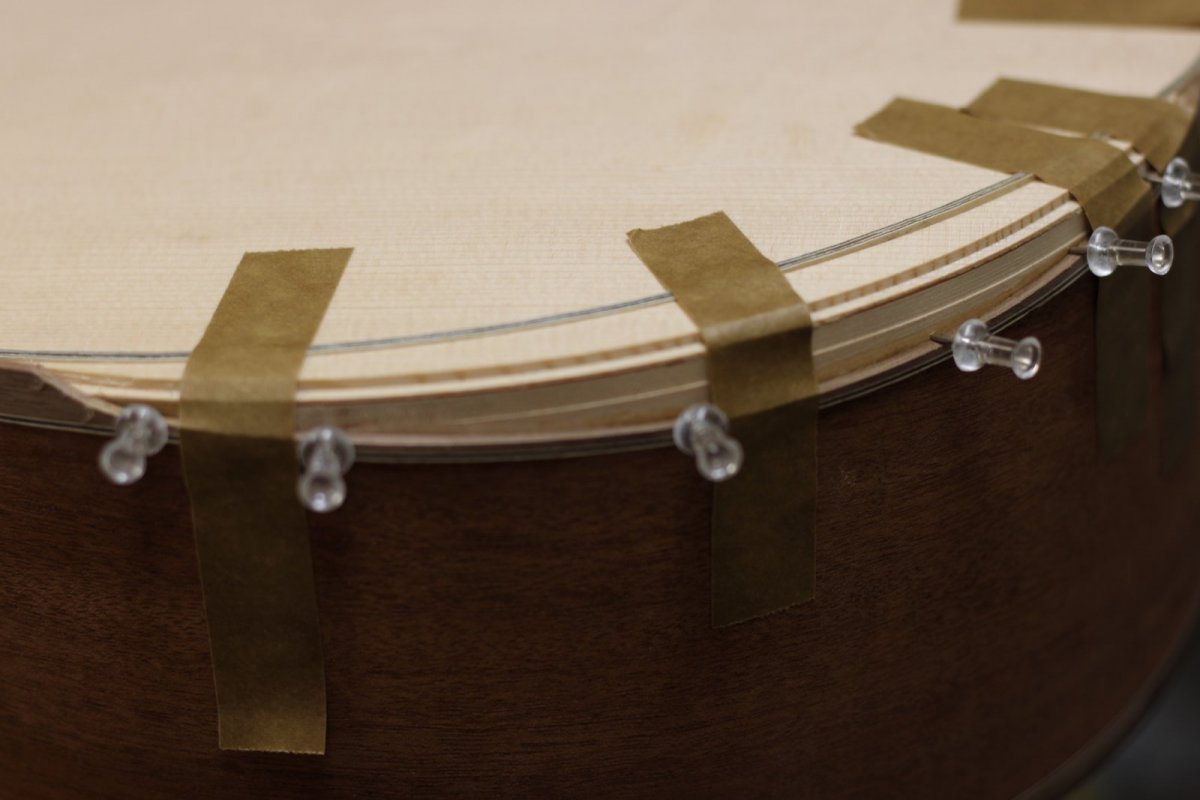I’m easy. You sold me, brother. Wood it is!
You are using an out of date browser. It may not display this or other websites correctly.
You should upgrade or use an alternative browser.
You should upgrade or use an alternative browser.
1975 Guild F-212 Makeover
- Thread starter Christopher Cozad
- Start date
davismanLV
Venerated Member
- Joined
- Mar 24, 2011
- Messages
- 19,364
- Reaction score
- 12,184
- Location
- U.S.A. : Nevada : Las Vegas
- Guild Total
- 2
This part looks so complicated to me.... or maybe it's just confusing. I had enough trouble just following the edge with both. Christopher, I'm enjoying this so much!!Here is an image of the binding channel / rebate / "rabbit.” The binding extends deeper down onto the sides than does my purfling, which sits up on its own ledge and is pinched between the binding and the edge of the soundboard. I have cut these using a graver and a chisel. Both tools are razor sharp.
I am incorporating a transitional arm bevel. This feature “eases” the sharp edge where your forearm tends to lay across the soundboard. The design alters the established edges of the upper bout on the bass side. I have to create a new path for the purfling, separate from the binding, to unify the modification in the edge. The binding follows the side, and the purfling moves in farther into the soundboard, away from the edge. The bevel will be formed between the two.
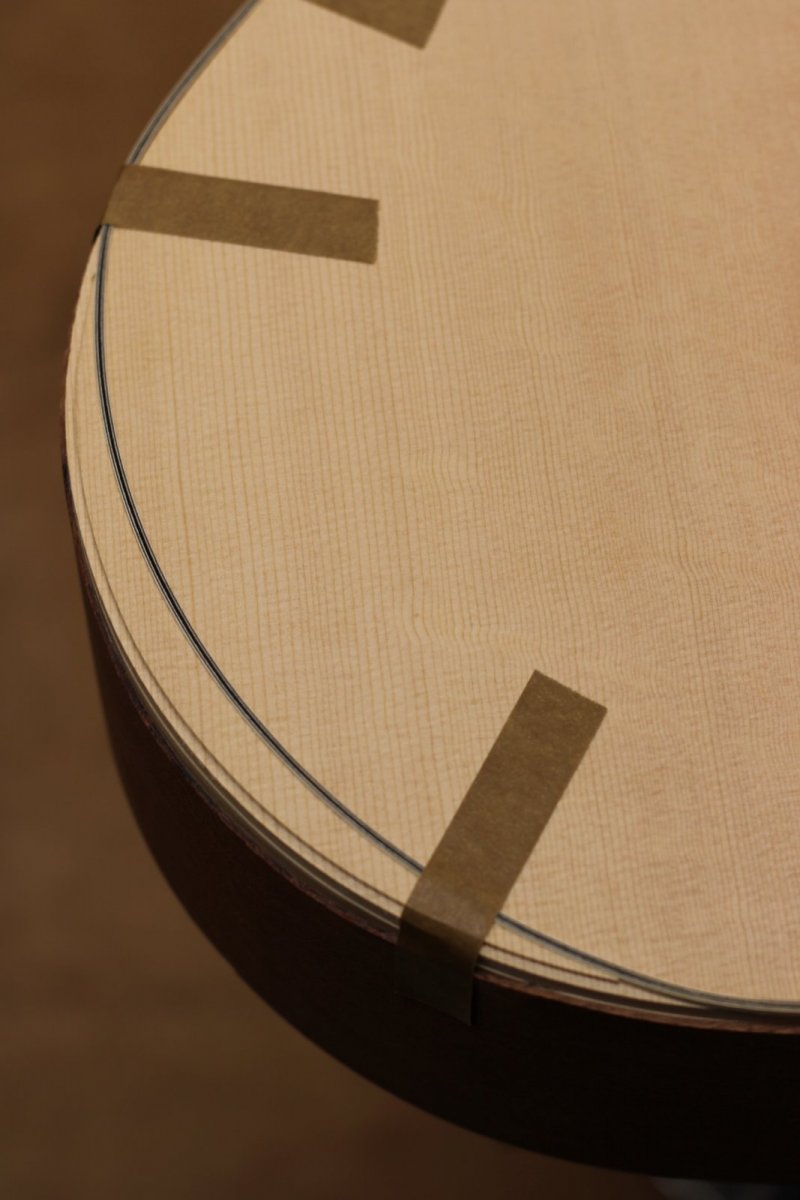
Cutting the purfling and binding rebates by hand requires razor sharp tools. I mean stupid sharp! And that often means stopping the cutting from time to time to strop the edges (or even to re-sharpen). It is very precise work but it is very rewarding, as any who use hand tools can attest. I have three completely separate router-based fixtures for cutting these channels, and have used them all at one time or another. Due to the way these fixtures/jigs “register” off the sides, they each require the sides of an instrument to be PRECISELY 90° to the plane of the front and back plates. The slightest variation (such as occurs in nearly every hand-made guitar) will show up in a wider or narrower channel. And that can get really ugly. With hand tools I can adapt to all those crazy variations (and this guitar has no shortage of ‘em).
davismanLV
Venerated Member
- Joined
- Mar 24, 2011
- Messages
- 19,364
- Reaction score
- 12,184
- Location
- U.S.A. : Nevada : Las Vegas
- Guild Total
- 2
Yeah! I found that using a Dremel with a router attachment on it was akin to making coleslaw with a blender!! Best I can come up with. So little control or finesse!!Cutting the purfling and binding rebates by hand requires razor sharp tools. I mean stupid sharp! And that often means stopping the cutting from time to time to strop the edges (or even to re-sharpen). It is very precise work but it is very rewarding, as any who use hand tools can attest. I have three completely separate router-based fixtures for cutting these channels, and have used them all at one time or another. Due to the way these fixtures/jigs “register” off the sides, they each require the sides of an instrument to be PRECISELY 90° to the plane of the front and back plates. The slightest variation (such as occurs in nearly every hand-made guitar) will show up in a wider or narrower channel. And that can get really ugly. With hand tools I can adapt to all those crazy variations (and this guitar has no shortage of ‘em).
Coleslaw, exactly! Too funny.
SFIV1967
Venerated Member
Amazing thread again Christopher!
A little veer:
Your excellent picture above brought up something in my mind about that piece I marked in the picture:
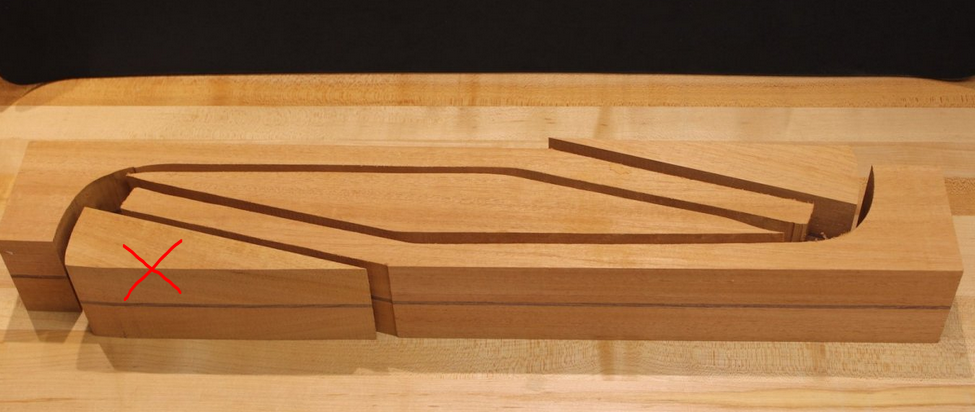
When the MusicZoo visted the new Hartford factory back in 2013 they had posted those 2 pictures with the description I marked in yellow! So that is "the wedge" !
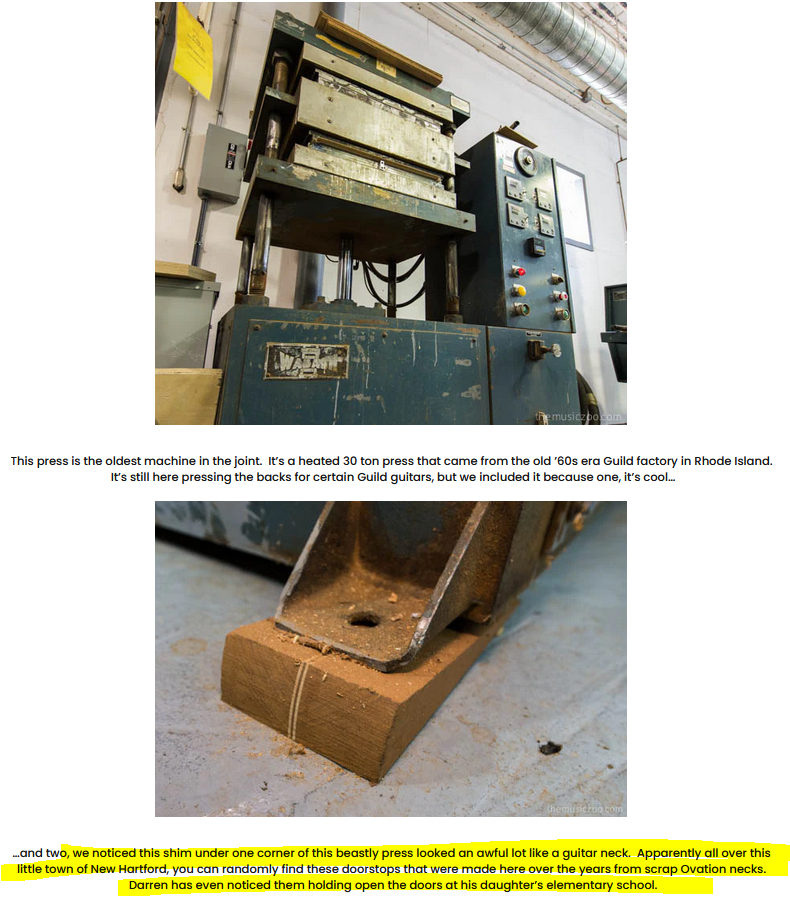
And Ren even took those old wedges from New Hartford to Oxnard!
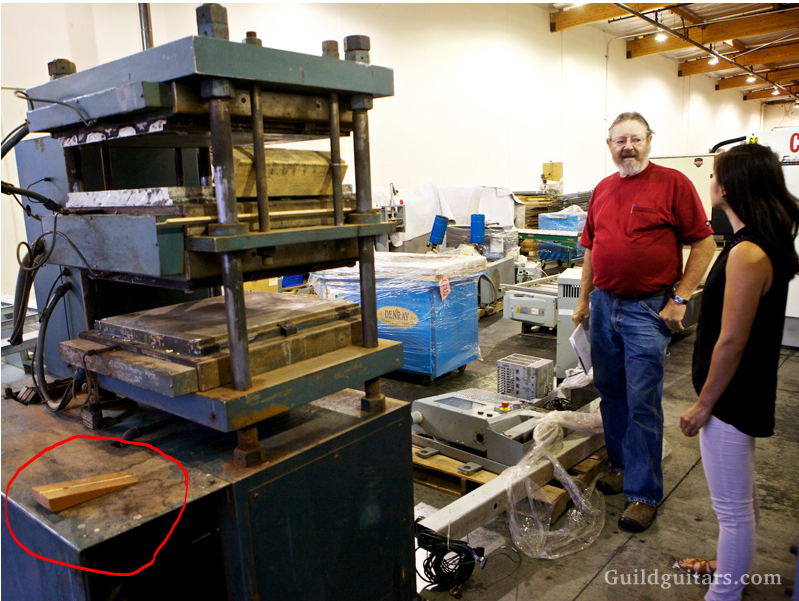
Sorry for my veer here, I just thought your picture was excellent showing where those wedges come from!
Ralf
A little veer:
Your excellent picture above brought up something in my mind about that piece I marked in the picture:

When the MusicZoo visted the new Hartford factory back in 2013 they had posted those 2 pictures with the description I marked in yellow! So that is "the wedge" !

And Ren even took those old wedges from New Hartford to Oxnard!

Sorry for my veer here, I just thought your picture was excellent showing where those wedges come from!
Ralf
Awesome, Ralf! That is precisely how that piece (those pieces) come to exist. I am impressed that you would remember the photos.
GGJaguar
Reverential Member
Ralf is better than AI.I am impressed that you would remember the photos.
Ralf is better than AI.
I am with you all the way. Ralf is a detective’s detective.
Westerly Wood
Venerated Member
- Joined
- Mar 21, 2007
- Messages
- 13,426
- Reaction score
- 6,626
- Guild Total
- 2
It is possible that Ralf is not a real person, but a super intelligent coding that went awry when Don first created the LTG. Only GAD would know for sure.Ralf is better than AI.
It is possible that Ralf is not a real person, but a super intelligent coding that went awry when Don first created the LTG.
This might work if he were Northern German. But Ralf is Bavarian, and we all know, Bavarians can NOT be replicated!
GGJaguar
Reverential Member
wileypickett
Enlightened Member
Amazing thread again Christopher!
A little veer:
Your excellent picture above brought up something in my mind about that piece I marked in the picture:
When the MusicZoo visted the new Hartford factory back in 2013 they had posted those 2 pictures with the description I marked in yellow! So that is "the wedge" !
And Ren even took those old wedges from New Hartford to Oxnard!
Sorry for my veer here, I just thought your picture was excellent showing where those wedges come from!
Ralf
Great veer Ralf!
Chris is that a mahogany strip for the outermost layer of the binding/purfling?
The "outer outermost” piece is Walnut, the binding. All the skinnier stuff, the purfling, is either Maple (for the light color) or dyed Holly (for the dark color). These three materials will display more distinctively once the finish goes on.Chris is that a mahogany strip for the outermost layer of the binding/purfling?
Got it!The "outer outermost” piece is Walnut, the binding. All the skinnier stuff, the purfling, is either Maple (for the light color) or dyed Holly (for the dark color). These three materials will display more distinctively once the finish goes on.
I assumed the B/W strips were plastic. Wrongo bucko???
That's great, Chris.
The back of the guitar is bound. Now on to the soundboard. For the treble side it is lather, rinse and repeat - what I did twice on the back. On the bass side, however, I have an arm bevel to bind around. I reduce the height of the binding in the area that I cut a curve into the side.
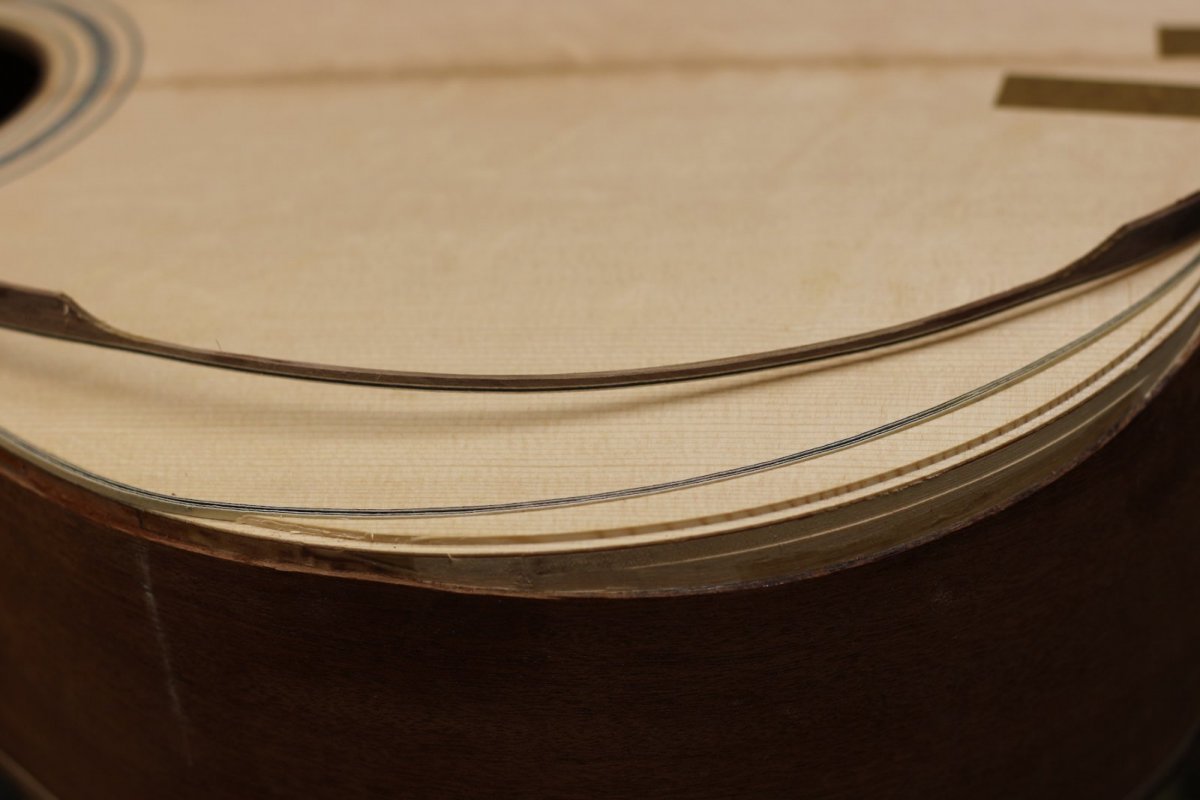
This height reduction allows me to bend the already bent binding to follow the curve.
Am I allowed to VEER on my own topic? “Bend the Bent Binding.” Is that a song? Or maybe the name of a pub?
Binding, formerly a straight piece of wood, is bent to follow the curve(s) of the side(s). For this style of arm bevel, the binding must also be bent (just a little) perpendicular to the direction of the standard bending. Wood doesn’t appreciate that kind of treatment, and is known to break - frequently. I got it right the second time around.
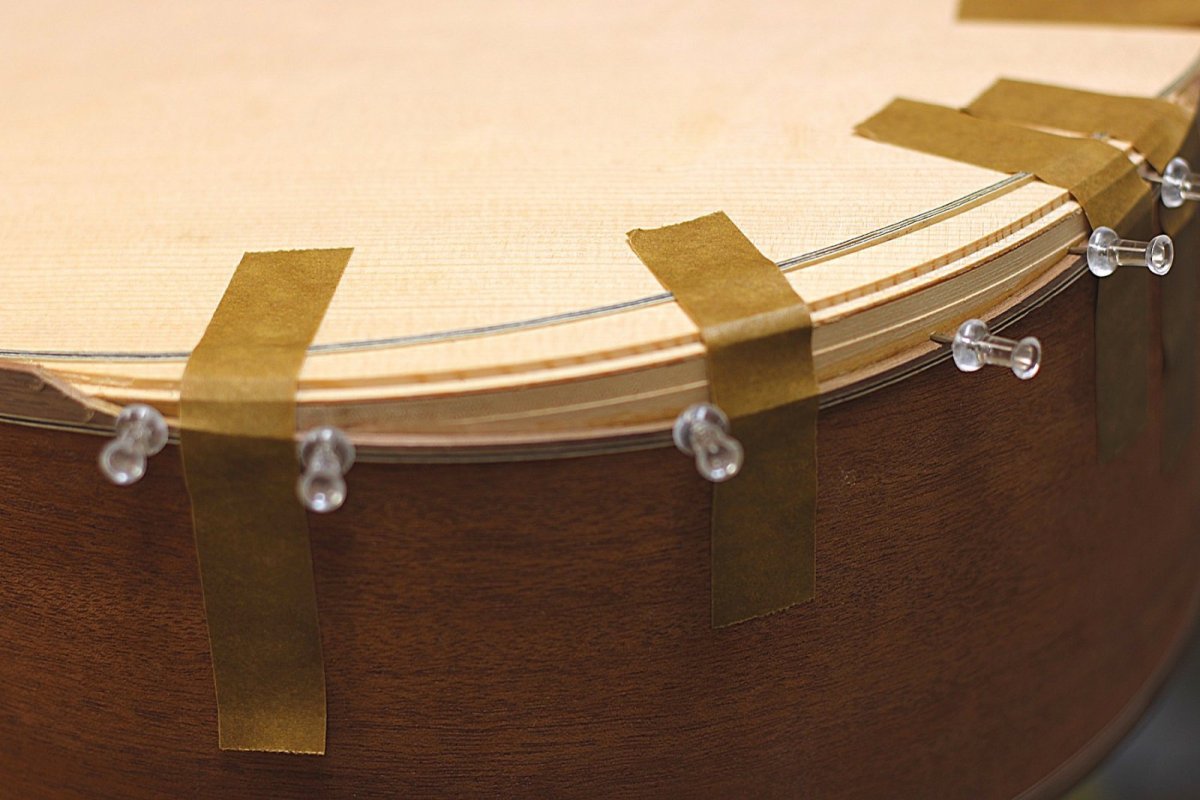

This height reduction allows me to bend the already bent binding to follow the curve.
Am I allowed to VEER on my own topic? “Bend the Bent Binding.” Is that a song? Or maybe the name of a pub?
Binding, formerly a straight piece of wood, is bent to follow the curve(s) of the side(s). For this style of arm bevel, the binding must also be bent (just a little) perpendicular to the direction of the standard bending. Wood doesn’t appreciate that kind of treatment, and is known to break - frequently. I got it right the second time around.

Attachments
Last edited:
Opsimath
Senior Member
The back of the guitar is bound. Now on to the soundboard. For the treble side it is lather, rinse and repeat - what I did twice on the back. On the bass side, however, I have an arm bevel to bind around. I reduce the height of the binding in the area that I cut a curve into the side.
This height reduction allows me to bend the already bent binding to follow the curve.
Am I allowed to VEER on my own topic? “Bend the Bent Binding.” Is that a song? Or maybe the name of a pub?
Binding, formerly a straight piece of wood, is bent to follow the curve(s) of the side(s). For this style of arm bevel, the binding must also be bent (just a little) perpendicular to the direction of the standard bending. Wood doesn’t appreciate that kind of treatment, and is known to break - frequently. I got it right the second time around.
The binding and purfling around the soundboard is now all custom fitted and snuggy. I can glue it in place,
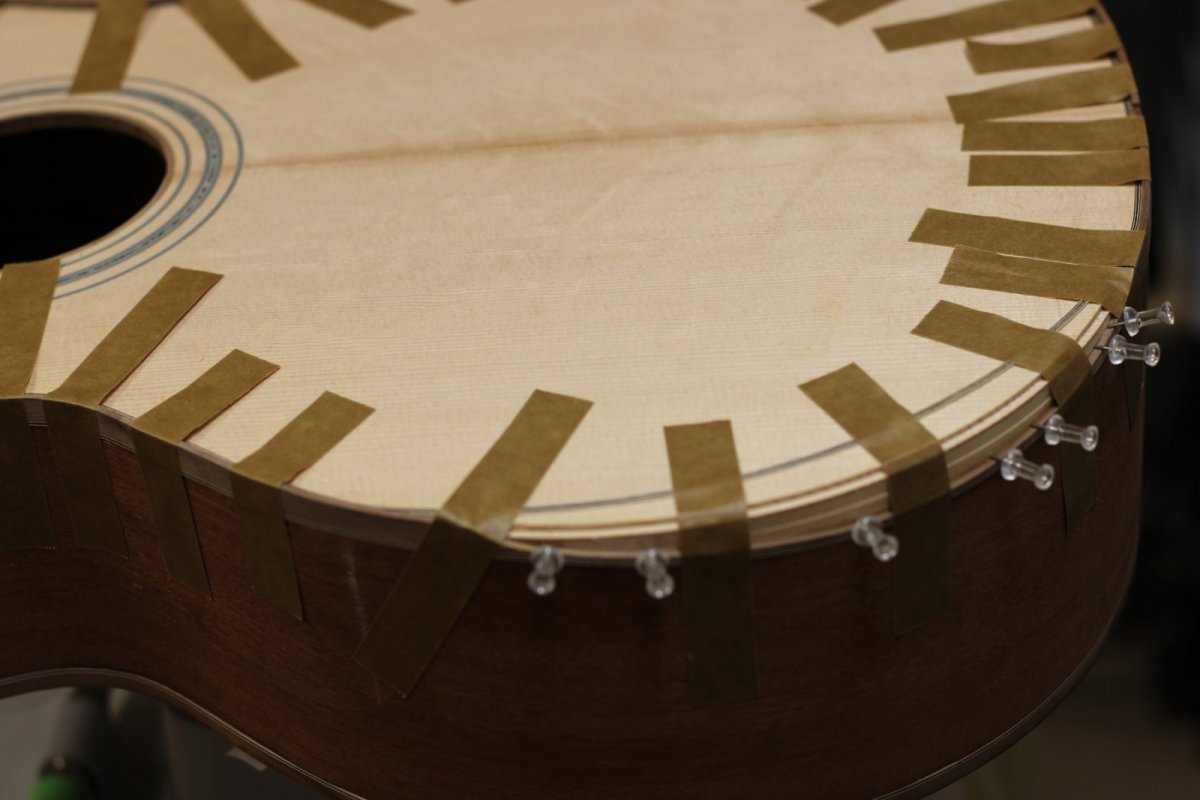
What are the push pins for?
Just wondering because in stained glass we use sewing pins as spacers between pieces, where the copper foil and solder will go. Those aren't spacers for anything are they?
